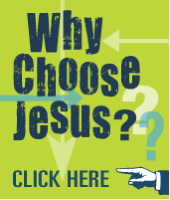The passage before us may begin with a man born blind from birth, but the truth lies in the "light" with which one is able to see and believe. Jesus’ healing takes place on the Sabbath day, and as a result a great controversy is stirred up with the Pharisees. The Pharisees are more interested in preserving the particulars of Moses’ day (Nehemiah 9:14) than acknowledging Jesus’ miraculous messianic sign (Luke 4:18). After all, the Pharisees by their own admission are Moses’ disciples and not Jesus’ (John 9:28).
In the final analysis, it is the man born blind who now sees and becomes Jesus’ disciple, while the Pharisees who were born seeing are now made blind by their own legalism. How ironic that the tables have so easily turned! Jesus’ method was to cultivate the man born blind through a process of understanding and transformation. Even after the new disciple is healed of blindness, he does not see Jesus face to face until after he has given his unrelenting and unwavering testimony to his neighbors and his community leaders. The man is not even sure who Jesus is, other than he must be from God, perhaps a prophet (v. 17). After the new disciple is expelled from the synagogue, Jesus encounters him and reveals himself in a fuller way. The result is that the man born blind believes Jesus’ divine claims as the messianic "Son of Man" and worships the true light of the world as "Lord" (vv. 35-38).
By: Mary Jones
Category: Jesus with The Handicapped - Man born blind


